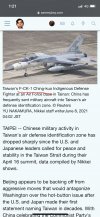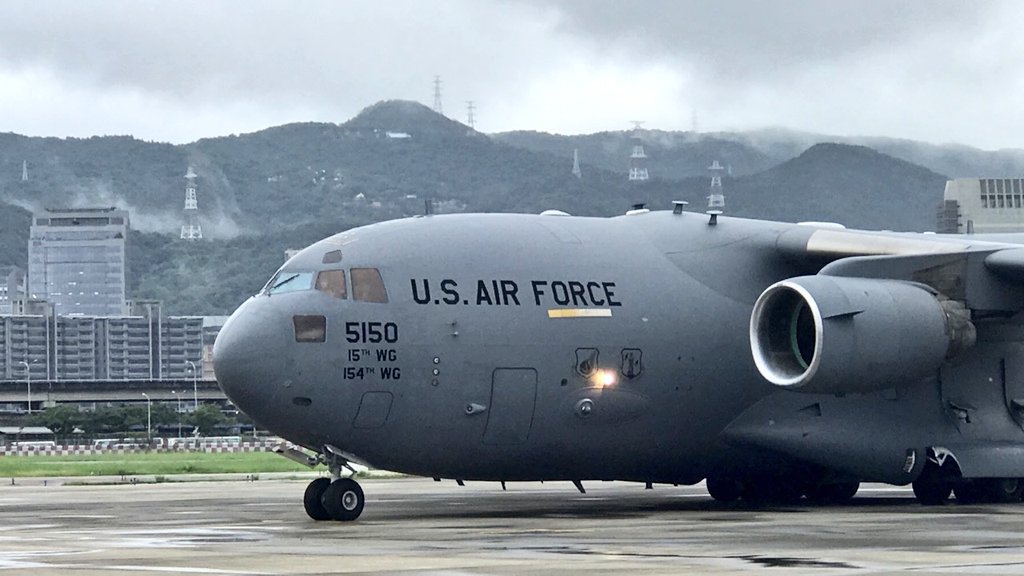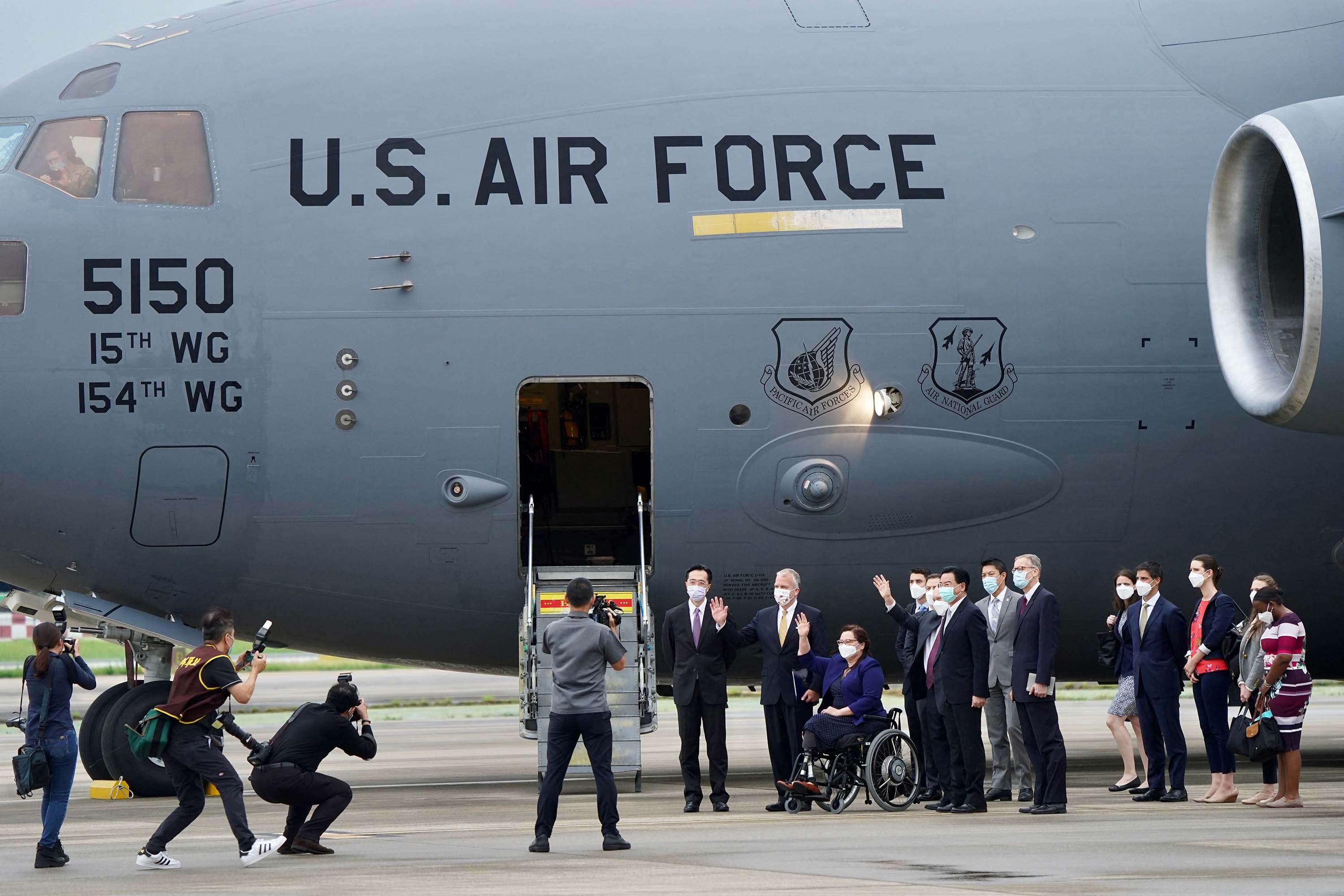- Joined
- Aug 8, 2008
- Messages
- 28,991
- Points
- 113
https://asia.nikkei.com/Politics/In...=3&pub_date=20210613093000&seq_num=2&si=44594

Taiwan's F-CK-1 Ching-kuo Indigenous Defense Fighter at an Air Force base in Tainan: China has frequently sent military aircraft into Taiwan's air defense identification zone. © Reuters
YU NAKAMURA, Nikkei staff writerJune 8, 2021 04:02 JST
TAIPEI -- Chinese military activity in Taiwan's air defense identification zone has dropped sharply since the U.S. and Japanese leaders called for peace and stability in the Taiwan Strait during their April 16 summit, data compiled by Nikkei shows.
Beijing appears to be backing off from aggressive moves that would antagonize Washington over the hot-button issue after the U.S. and Japan made their first statement naming Taiwan in decades. With China celebrating the Communist Party's 100th anniversary on July 1, the country has also prioritized ensuring domestic order.
China had sent military jets into Taiwan's air defense identification zone on 75 days between Jan. 1 and April 16, for a rate of about 70% or roughly five days weekly. A total of 257 jets, mainly J-10 and J-16 fighters, flew into Taiwan's ADIZ during these incursions, for an average of 3.4 aircraft per day of incident.
Taiwan experienced large-scale incursions of 10 or more Chinese jets on nine of those days, six of which happened within three weeks of the U.S.-Japan statement.
China tends to increase flybys around Taiwan whenever Washington signals greater involvement with the island. A record 25 aircraft flew into the island's ADIZ on April 12, four days before the statement, amid growing speculation that U.S. President Joe Biden and Japanese Prime Minister Yoshihide Suga would refer explicitly to Taiwan.
China's posturing on April 12 also came one day after U.S. Secretary of State Antony Blinken's warning that "it would be a serious mistake for anyone to try to change that status quo [on Taiwan] by force."
Beijing's activities near Taiwan diminished after the summit, both in scale and frequency. Su Tzu-yun, from Taiwan's Institute of National Defense and Security Research, said the Biden-Suga statement had a clear impact.
Since April 16, an average of 1.9 Chinese jets has entered Taiwan's ADIZ per day of incursion. No incidents involving 10 or more aircraft have been reported.
Incursions have occurred in just seven of the past 14 days, with two aircraft involved on only one occasion. The other six days involved one plane each -- including on June 4, when Blinken criticized China on the 32nd anniversary of the Tiananmen Square crackdown.
China wants to avoid antagonizing the U.S. over Taiwan, while demonstrating Beijing's military might to those at home ahead of the Communist Party centennial, Su said, noting the recent uptick in provocations against Southeast Asian nations.
Sixteen Chinese military jets approached Malaysian territory on the island of Borneo on May 31. They shifted course once Malaysia scrambled its own aircraft in response.
Over 220 Chinese vessels have been moored by a reef in the Spratly Islands, which both China and the Philippines claim as their own, since March. The Philippines has slammed the presence of the ships in what the archipelago considers its exclusive economic zone.
China military flybys near Taiwan plunge after US-Japan statement
Beijing looks to avoid tensions ahead of Communist Party centennial
Taiwan's F-CK-1 Ching-kuo Indigenous Defense Fighter at an Air Force base in Tainan: China has frequently sent military aircraft into Taiwan's air defense identification zone. © Reuters
YU NAKAMURA, Nikkei staff writerJune 8, 2021 04:02 JST
TAIPEI -- Chinese military activity in Taiwan's air defense identification zone has dropped sharply since the U.S. and Japanese leaders called for peace and stability in the Taiwan Strait during their April 16 summit, data compiled by Nikkei shows.
Beijing appears to be backing off from aggressive moves that would antagonize Washington over the hot-button issue after the U.S. and Japan made their first statement naming Taiwan in decades. With China celebrating the Communist Party's 100th anniversary on July 1, the country has also prioritized ensuring domestic order.
China had sent military jets into Taiwan's air defense identification zone on 75 days between Jan. 1 and April 16, for a rate of about 70% or roughly five days weekly. A total of 257 jets, mainly J-10 and J-16 fighters, flew into Taiwan's ADIZ during these incursions, for an average of 3.4 aircraft per day of incident.
Taiwan experienced large-scale incursions of 10 or more Chinese jets on nine of those days, six of which happened within three weeks of the U.S.-Japan statement.
China tends to increase flybys around Taiwan whenever Washington signals greater involvement with the island. A record 25 aircraft flew into the island's ADIZ on April 12, four days before the statement, amid growing speculation that U.S. President Joe Biden and Japanese Prime Minister Yoshihide Suga would refer explicitly to Taiwan.
China's posturing on April 12 also came one day after U.S. Secretary of State Antony Blinken's warning that "it would be a serious mistake for anyone to try to change that status quo [on Taiwan] by force."
Beijing's activities near Taiwan diminished after the summit, both in scale and frequency. Su Tzu-yun, from Taiwan's Institute of National Defense and Security Research, said the Biden-Suga statement had a clear impact.
Since April 16, an average of 1.9 Chinese jets has entered Taiwan's ADIZ per day of incursion. No incidents involving 10 or more aircraft have been reported.
Incursions have occurred in just seven of the past 14 days, with two aircraft involved on only one occasion. The other six days involved one plane each -- including on June 4, when Blinken criticized China on the 32nd anniversary of the Tiananmen Square crackdown.
China wants to avoid antagonizing the U.S. over Taiwan, while demonstrating Beijing's military might to those at home ahead of the Communist Party centennial, Su said, noting the recent uptick in provocations against Southeast Asian nations.
Sixteen Chinese military jets approached Malaysian territory on the island of Borneo on May 31. They shifted course once Malaysia scrambled its own aircraft in response.
Over 220 Chinese vessels have been moored by a reef in the Spratly Islands, which both China and the Philippines claim as their own, since March. The Philippines has slammed the presence of the ships in what the archipelago considers its exclusive economic zone.






